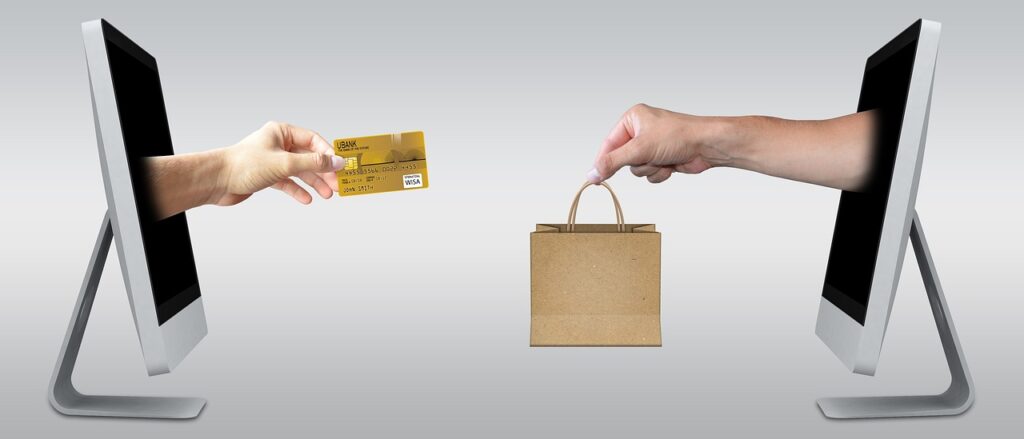Have you ever wondered how to turn Amazon return items into a profitable venture? In this article, we will explore the world of Amazon return auctions and how they can be a lucrative opportunity for you. By understanding the process and applying some smart strategies, you can capitalize on these auctions, making money while helping others find great deals. Whether you’re a seasoned entrepreneur or just looking for some extra cash, this guide will show you how to navigate the world of Amazon return auctions and maximize your earnings. So, let’s get started on this exciting journey of turning returned items into a profitable business!

Understanding Amazon Return Auctions
What are Amazon Return Auctions
Amazon Return Auctions are online platforms where customers can bid on items that have been returned to Amazon for various reasons. These items are typically in used or refurbished condition and are sold at a discounted price compared to their original retail value.
Why do Amazon Return Auctions exist
Amazon Return Auctions exist for several reasons. First, they provide a way for Amazon to recoup some of the losses incurred from returned items. By auctioning off these items, Amazon can still generate revenue rather than simply disposing of the returned goods. Additionally, it gives customers an opportunity to purchase items at a lower cost, making it a win-win situation for both Amazon and the buyers.
Getting Started with Amazon Return Auctions
Creating an Amazon account
To participate in Amazon Return Auctions, you will need to create an Amazon account if you don’t already have one. Simply visit the Amazon website and follow the prompts to create an account by providing your personal information and setting up a password.
Locating the Auction Section
Once you have an Amazon account, navigate to the Amazon website and look for the “Auctions” section. This section can usually be found by clicking on the “Shop by Department” dropdown menu and selecting “Auctions” from the list of categories. It may also be listed under the “Today’s Deals” or “Shopping Programs and Rentals” sections, depending on the website layout.

Understanding the Auction Process
How the bidding works
In Amazon Return Auctions, the bidding process is similar to other online auction platforms. Each auction will have a starting bid, and users can place bids higher than the current bid. The individual with the highest bid at the end of the auction wins the item. It’s important to note that if you win an auction, you are obligated to complete the purchase.
How to increase chances of winning an auction
To increase your chances of winning an auction, there are a few strategies you can employ. First, set a maximum bid that you are willing to pay and stick to it. This will prevent you from overpaying for an item in a bidding war. Additionally, placing your bid closer to the auction end time can sometimes deter other bidders from responding, increasing your chances of winning.
Assessing Potential Profits
How to calculate potential profits
Calculating potential profits from Amazon Return Auctions involves a few key considerations. Start by researching the current retail price of the item you are interested in. Then, consider the condition of the item being auctioned and how popular it is among buyers. By comparing the auction price to the estimated resale value, you can determine your potential profit margin.
Understanding the potential investment and ROI
Participating in Amazon Return Auctions requires an investment of both time and money. Alongside the auction price, you need to consider any costs associated with shipping, storage, and possible repairs for the returned items. By calculating your return on investment (ROI), you can determine if the potential profits outweigh the investment required.

Investment Needed for Amazon Return Auctions
Costs associated with auction bidding
There are a few costs associated with auction bidding on Amazon Return Auctions. These include the cost of the item itself, any additional fees or taxes levied by the auction platform, and the cost of shipping the item to your location. It’s important to factor in these costs when determining your bidding strategy and potential profits.
Initial capital requirements
To get started with Amazon Return Auctions, you will need some initial capital. This is the money you will use to bid on items and cover any associated costs. The amount of capital required will vary depending on the items you are interested in and the number of auctions you want to participate in. It’s essential to carefully budget and allocate funds to avoid overspending.
Selecting the Right Products for Auction
What products to look for
When selecting products for auction, it’s important to consider the demand and potential resale value. Look for popular items that have a high likelihood of selling quickly and at a good price. Electronics, home appliances, and fashion accessories are often in high demand. Additionally, consider the condition of the items, as those in better condition generally fetch higher prices.
Understanding product quality and condition
Amazon Return Auctions sell items in various conditions, ranging from used to refurbished. It’s crucial to carefully review the product description and condition notes provided by the auction platform. This will help you gauge the quality of the item and its potential resale value. Be cautious of items with significant damage or defects, as they may be harder to sell.
Handling, Sorting, And Storing Return Goods
Logistical aspects of returned goods
Once you have won an auction and the items are delivered to you, there are several logistical aspects to consider. You will need to inspect and sort the goods, ensuring they match the item descriptions and conditions stated in the auction. Take note of any damages or discrepancies, as these may affect the resale value. Proper handling is essential to maintain the condition of the items.
Need for storage space and inventory management
To effectively manage your inventory of returned goods, you will need sufficient storage space. This can be a spare room in your home or a rented storage unit, depending on the volume of items you plan to resell. It’s important to organize and keep track of your inventory to avoid confusion and ensure smooth operations when listing items for resell.
Reselling the Returned Goods
Where to resell return goods
When it comes to reselling the returned goods from Amazon Return Auctions, there are several platforms to consider. Online marketplaces such as eBay, Craigslist, and Facebook Marketplace provide a wide reach for potential buyers. Additionally, you can explore specialty reselling platforms like Poshmark for fashion items or Gazelle for electronics. Choose the platform that aligns with your target market and ensures maximum exposure for your listings.
How to list and price the goods for resell
Listing and pricing the goods for resell is crucial for attracting buyers and maximizing profits. Take high-quality photos of the items from different angles and write accurate and enticing product descriptions. Research similar products on your chosen reselling platform to gauge the market value and set a competitive price. Consider any fees associated with the platform and adjust your prices accordingly to ensure a desirable profit margin.
Legal and Ethical Considerations
Tax implications and reporting income
When reselling returned goods, it’s important to be aware of the tax implications and reporting requirements. Depending on your country and local laws, there may be specific regulations regarding the sale of second-hand goods and the reporting of income. Consult with a tax professional or accountant to ensure you are compliant with all tax obligations and to discuss any potential deductions or exemptions.
Legal and ethical concerns of reselling returned goods
Reselling returned goods comes with legal and ethical considerations. It’s essential to accurately represent the condition of the items and provide clear information to potential buyers. Misleading buyers can lead to negative feedback or even legal repercussions. Additionally, follow all copyright and intellectual property laws when listing items for resell, ensuring you have the necessary rights to sell the products.
Tips and Tricks for Success
Valuable strategies for auction bidding
To increase your chances of success in Amazon Return Auctions, consider implementing these strategies:
- Set a maximum bid and stick to it: Avoid getting caught up in bidding wars and overpaying for items.
- Bid closer to the auction end time: This may deter other bidders from responding.
- Research market prices: Understand the value of the items before placing your bids.
- Consider bundling items: Grouping related items can attract more buyers and increase profits.
- Read auction descriptions carefully: Look for any additional information or conditions that may impact the resale value.
Common pitfalls to avoid
To avoid common pitfalls in Amazon Return Auctions, keep these tips in mind:
- Always inspect the item condition: Don’t assume the item is in perfect condition based on the product description alone.
- Budget for additional costs: Account for shipping, potential repairs, and storage fees when calculating your potential profits.
- Stay within your expertise: Focus on items you are knowledgeable about to avoid purchasing low-quality or counterfeit goods.
- Monitor your inventory: Keep track of all your items and listings to ensure accurate inventory management and prevent overselling.
- Maintain good customer service: Respond promptly to buyer inquiries and address any issues that arise to maintain a positive reputation.
By understanding the ins and outs of Amazon Return Auctions, considering potential profits and investments, and implementing effective strategies, you can maximize your success and profitability in this resale business. Remember to always conduct thorough research, stay informed of legal obligations, and provide exceptional customer service to establish a strong and profitable presence in the online marketplace.

